“Smart” Vacuum Cleaners
An Audit Into The Security and Integrity of IoT Systems
Andrew Wong | UNSW Sydney
Introduction
Internet of Things (IoT) and Smart Home devices are everywhere.
Q: Can we completely trust a device’s {security, privacy}?
A:
- Developers are humans.
- Humans make mistakes.
- Developers make
mistakesbugs
- Developers make
- Humans make mistakes.
- Or maybe secret company agendas?
About Me
Andrew Wong
Computer Engineering @ UNSW Sydney
Making things, breaking things… mainly the latter
Background Information
Background Information
Widespread availability of IoT brands

- IoT manufacturers sell their products to vendors
- The product itself
- Cloud infrastructure
- Smartphone application
- White-label vendors buy a generic product
- Rebrand and sell products under their name

Vulnerabilities in IoT infrastructure
=
Vulnerability in all white-label products
Background Information
Centralisation and IoT Manufacturers as “Data Giants”
- Same IoT cloud infrastructure used by white-label vendors
- Data and network activity is all centralised / standardised
- Privacy concerns - Who, What, Where, When, Why?
- Infrastructure outage = really really big outage..
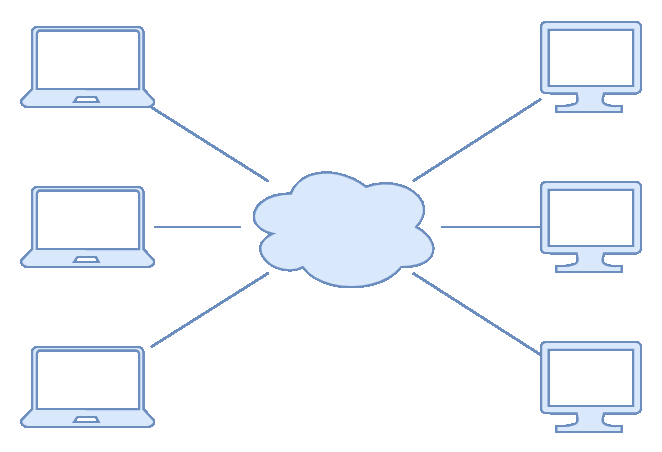
- Reverse engineering of cloud communications protocols / API
- e.g. MiIO protocol (link)
- Decoupling of devices from the necessity of internet / IoT cloud
About The Company

- Robotic home cleaning appliances
- Founded in July 2014, Beijing
- Partnered with Xiaomi in September 2014
- Investments + Partnership
- September 2016 - Mi Home Robotic Vaccuum Cleaner
- Very first product!
- ⋮ Roborock S5, E2, E3
- June 2019 -
- ⋮ Roborock S5 Max, S4, S6 Pure, S6 MaxV, E4, S4 Max
- January 2021 - S7
About The Device
Roborock S6 Vacuum Cleaner
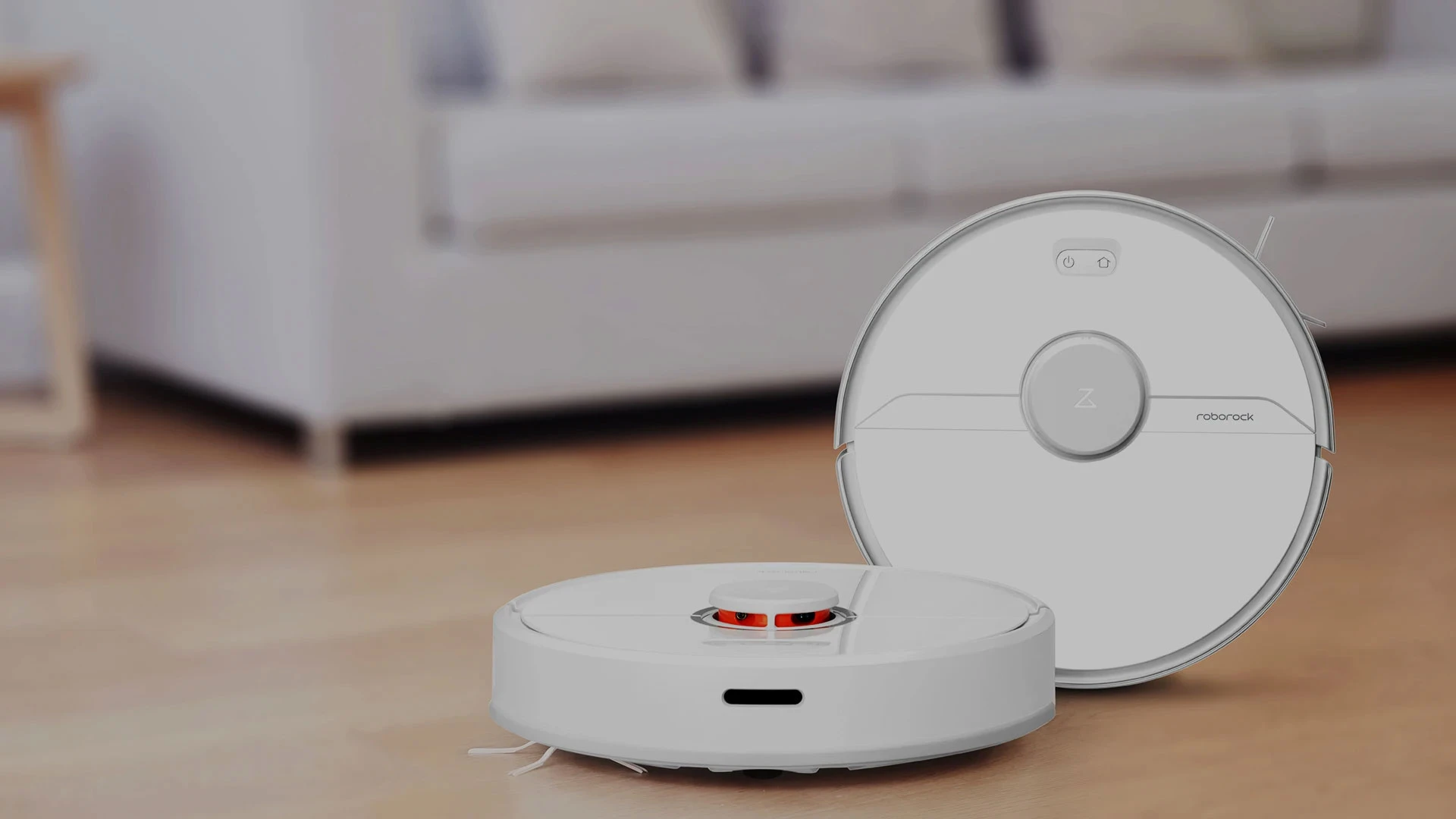
Specifications
- CPU: Allwinner R16 Quad-core ARMv7
- ACU: STM32F103VC
- RAM: 512 MB
- Flash: 4 GB eMMC
- Wireless: RTL8189ETV (802.11 b/g/n)
- Cloud: Tuya / Xiaomi
- OS: Ubuntu 14.04
Cloud Capability


IoT infrastructure vulnerability (15/09/2021)
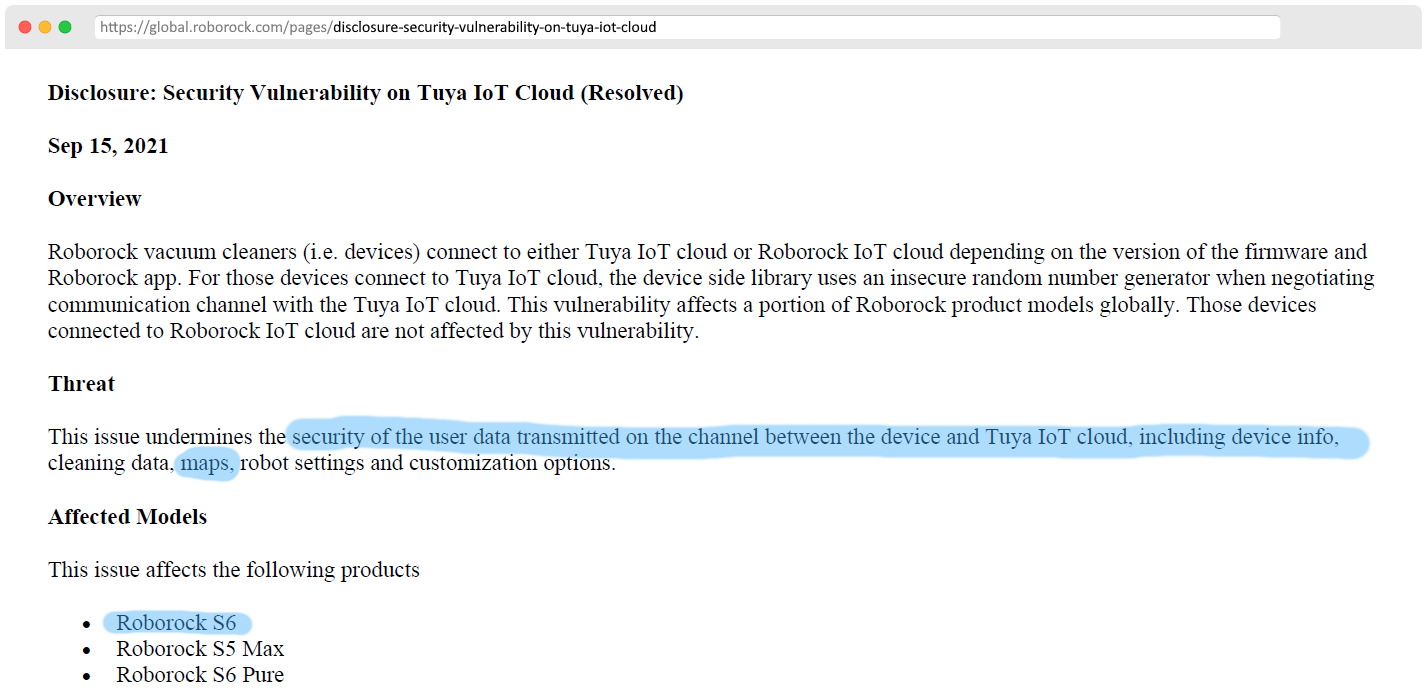
Statement
How have manufacturers of IoT / smart home devices addressed the increasing concerns of digital privacy and product security?
Rationale
🔐 Security is important!
📒 Check things for yourself!
Proposal
Digital Privacy
Investigate the nature of network data (i.e. content, frequency, destination) from the Roborock S6, and how the data is used.
Product Security
Investigate potential security vulnerabilities of the Roborock S6, and assess the effectiveness of current security fortifications.
Literature Review
Existing Works and Papers
Literature Review
IoT ☁
The majority of hardware hacks / custom firmwares have originated from the desire to decouple hardware from cloud services
IoT | 2018 - Michael Steigerwald (VTRUST)
Talk: Smart home - Smart hack
- Products from different manufacturers used the same cloud infrastructure each with their own ‘customised’ (white-label) smartphone apps
- Supposed ‘military-grade security’
- Used the Espressif ESP8266 chip
- WiFi-enabled SoC with Arduino support
- Often used by tinkerers and enthusiasts
- Anyone can become an ‘IoT company’ regardless of “having in-depth technical knowledge of IoT or IT security.”
- 🚩🚩🚩
IoT | 2018 - Michael Steigerwald (VTRUST)
Talk: Smart home - Smart hack
“The analysis of the ‘smart’ devices using this basic platform is generally frightening […] serious […] shortcomings”
- Insecure transmission of encryption keys, serial number, etc…
- Insecure transmission of wireless credentials during pairing
- Ease of white-labelling and starting your own IoT business
- Ease of selling malicious devices
IoT | 2018 - Michael Steigerwald (VTRUST)
Talk: Smart home - Smart hack
Automated flashing tool tuya-convert created that exploited prior vulnerabilities to flash custom decoupled firmware
(i.e. ESPhome, Tasmota, etc…)
IoT | 2018 - Michael Steigerwald (VTRUST)
Tuya’s Response
IoT | 2017/2018 - Xiaomi Dafang Hacks
- Cheap WiFi camera that can be made to boot off a microSD card
- Circuit board exposed UART (
baud_rate=115200) pins that allowed interaction with U-Boot bootloader - Modification of boot environment to start
/bin/sh([link]) - Gain root shell access
- Dump firmware
- Analyse, modify and package updated firmware
Access and Control
Gaining access to a shell / stored data / things we shouldn’t.
Flash IC Dumping

- May require a proprietary flash programmer (above: US$3655)
- Budget solution for common flash types: Raspberry Pi (AU$100)
- Some flash chips (depending on form factor) may require to be desoldered
- 🧨 Possibly a destructive process 🧨
- Open-source software:
flashrom
BGA shorting to gain access to FEL
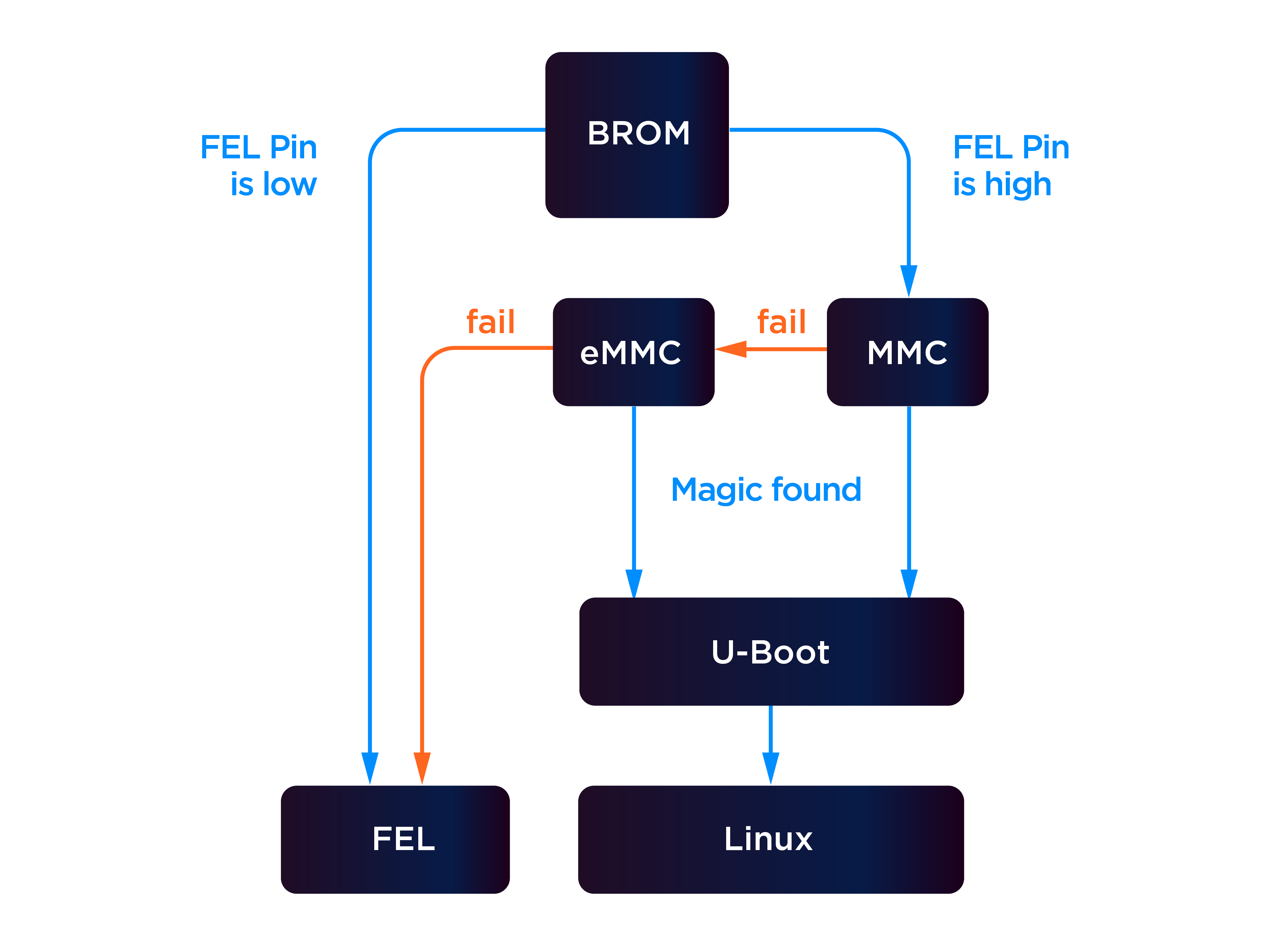
- FEL mode is a “fallback” system on Allwinner SoCs
- Allows the flashing and reprogramming of the SoC
- Generally triggered by pulling
FEL pin (
LRADC0) LOW during boot - FEL mode can also be entered if the bootloader fails to load 🤔
BGA shorting to gain access to FEL
- On the Allwinner R16 (BGA package) FEL pin located on ball location
L14- Not located on package edge the chip so
Enter FEL mode by preventing (e)MMC load?
- SoC has a solder plane height of around 0.3mm
- Too shallow for a wire, but tall enough for aluminium foil…
BGA shorting to gain access to FEL

- Thickness: ~0.02mm (… 0.02mm « 0.3mm)
- Conductive: Yep!
- $$$
Documented: SEEMOO-MSC-0142
BGA shorting to gain access to FEL | Aside (2021)
On later versions (post 2020), U-Boot shell access was patched, so shell access via UART was mitigated
Pin TPA17 on the Roborock S7 circuit board was discovered to connect to ball location L14 on the SoC.
Therefore by pulling TPA17 / L14 / LRADC0 LOW (i.e connect to GND), FEL mode can be entered
Vacuums in the Cloud: Analyzing Security in a Hardened IoT Ecosystem
Presentation: USENIX WOOT 19
- Security analysis performed on a Neato BotVac Connected robot vacuum cleaner (popular in the US)
- AM335x Microprocessor (ARM Cortex-A8)
- Cold-boot attack allowed RAM to be dumped over serial
- - restarting the system whilst keeping memory modules powered on, keeping memory (mostly) in-tact
- USB + Serial communication allowed boot into custom image that could then dump the memory for later triage
Vacuums in the Cloud: Analyzing Security in a Hardened IoT Ecosystem
- Memory dumps contained confidential keys
- 🙋♀️ Auth/Authz to the robot
- 🙆♀️ Auth/Authz to the cloud infrastructure
- Logs and coredumps were encrypted… but keys hardcoded
- Secret key RNG algorithm determined to be weak
- Small keyspace given known data = bruteforceable
- RSA key was shared with all devices 🔓
- Identity impersonation
Also discovered vulnerability in an unauthenticated stage.
2014 - Firmware Analysis
Paper: A Large-Scale Analysis of the Security of Embedded Firmwares
- Broad analysis of a large number of firmware images
- Discovered 38 new vulnerabilities over 693 images
- Similarities in vulnerabilities
- Static analysis and extraction of keys, credentials, configurations and other ‘tells’
2014 - Firmware Analysis
- Source code changes largely remain the same
- But binary files change ‘arbitrarily’
- Difficult to compare binary files
- Calculate fuzzy hashes instead to compare similarity
Client-Side and Infrastructural Security
iOS application of a smart doorlock was analysed to (in)validate claims made by the device company
- Lock events and other sensitive information were being logged independent of locking functionality
- Access to lock settings were purely client-side UI checks
- Certificate pinning bypass-able
Source: Backdooring the Frontdoor
LIDAR - Acoustic Eavesdropping
LIDAR - Light Detection and Ranging
- Uses laser lights to sense distance
- Side-channel also exposes intensity (on some units)
- Can use to detect minute vibrations induced by audio sources

LIDAR - Acoustic Eavesdropping
- Vibrations are extracted and turned back into sound waves
- Extraction of sensitive data (i.e. credit card digits)
- Achieved 91% classification accuracy
2015: Acoustic Eavesdropping through Wireless Vibrometry
2020: LidarPhone: acoustic eavesdropping using a lidar sensor
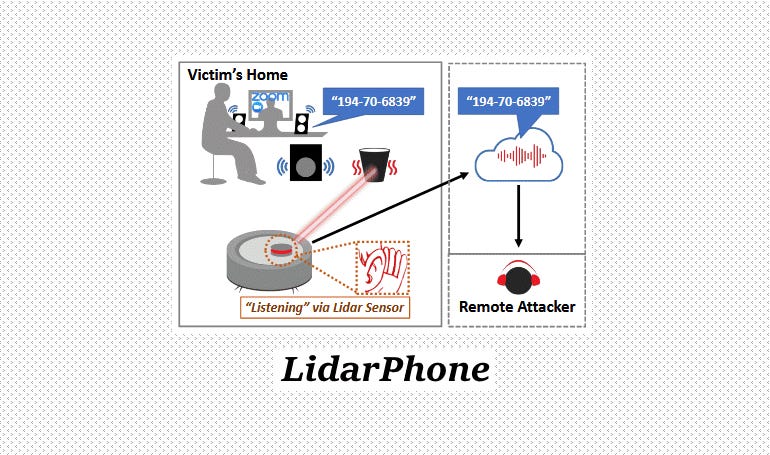
Xiaomi Ecosystem | 2017-2019 - Dennis Giese
Paper:
SEEMOO-MSC-0142(July 10, 2019)
- Research available: dontvacuum.me
- Performed security analysis of a range of Xiaomi products
- Found ways to root the Mi Home Robotic Vacuum Cleaner and the Roborock S6
- UART, hardware fault injection, etc…
- Developed cloud emulation software (DustCloud)
- Research led to development of 3rd party software (i.e. Valeduto)
Xiaomi Ecosystem | 2017-2019 - Dennis Giese
“How secure is the implementation of the ecosystem of the IoT market leader Xiaomi?”
- ⌚ The company quickly responds to security concerns
- 🔍 Many exposed endpoints of deprecated APIs
- 🔓 Many devices do not enforce proper HTTPS checks
- 🤝 Difficult to enforce security for plugins (vendor-provided)
- ❓ CIA principles generally kept
Xiaomi Ecosystem | 2017-2019 - Dennis Giese
More to be done

Extrapolation
Previous Achievements
- Smartphone application reverse engineering
- Device firmware interception
- Device hardware and component identification
- Network traffic analysis
- Storage analysis
Unaddressed Areas
- Post-2019 replication study
- In-depth firmware analysis
Plan
Plan
- Research
- Get the Roborock S6 vacuum cleaner
- Acquisition and capture of network activity
- Find a way in (it runs Linux!)
- Image the system for offline analysis
- Reverse engineering and binary analysis of firmware and software
- Look through binaries for security vulnerabilities and fortifications
Considerations
- I’m just a fourth year!
- Limited skills
- i.e. microsoldering for flash chip extraction and dumping
- Access to equipment and facilities are limited (COVID?)
- Only have one device to test on
Contingency
-
Option 1 - Protocol analysis (network traffic)
- i.e. Inspect the data and its nature
- Content, Frequency, Destination
- i.e. Inspect the data and its nature
-
Option 2 - Investigate the
 Xiaomi Home smartphone application (used to communicate with the device)
Xiaomi Home smartphone application (used to communicate with the device)- i.e. Decompile the Android APK file and look for security vulnerabilities and fortifications
Future Plans
- See what the sensors see
- Circuit board decomposition
- Analyse the custom ADB binary serving the USB port
Research, Upskill, Tooling
Research areas as of initial exploration
- How to capture network activity compromising my home network?
- Interfacing with JTAG / UART / Serial
- Linux filesystem / system forensics
- Learn the ARM Instruction Set (ISA)
- Processor Modes, Protection Rings?
- Learn about other hardware protections
- Secure Boot, RPBM, SELinux, LUKS, OPTEE, TrustZone, etc…
- Acquisition of hardware
- Serial adapters?
- Network switch?
- etc…
Project Timeline
- Initial research and research environment setup
- Teardown and initial hands-on of Roborock S6
- Disassembly and analysis of firmware binaries to identify vulnerabilities
- inc. ADB binary functionality
- Search for unsecured secrets, logs, configurations
- Inspection of outbound internet traffic - security, PII, etc
- Inspection of local network traffic
- Inspection of interaction with nearby devices
- Protocol analysis
Current Progress
Rolling Research
Preliminary Results
Network Setup
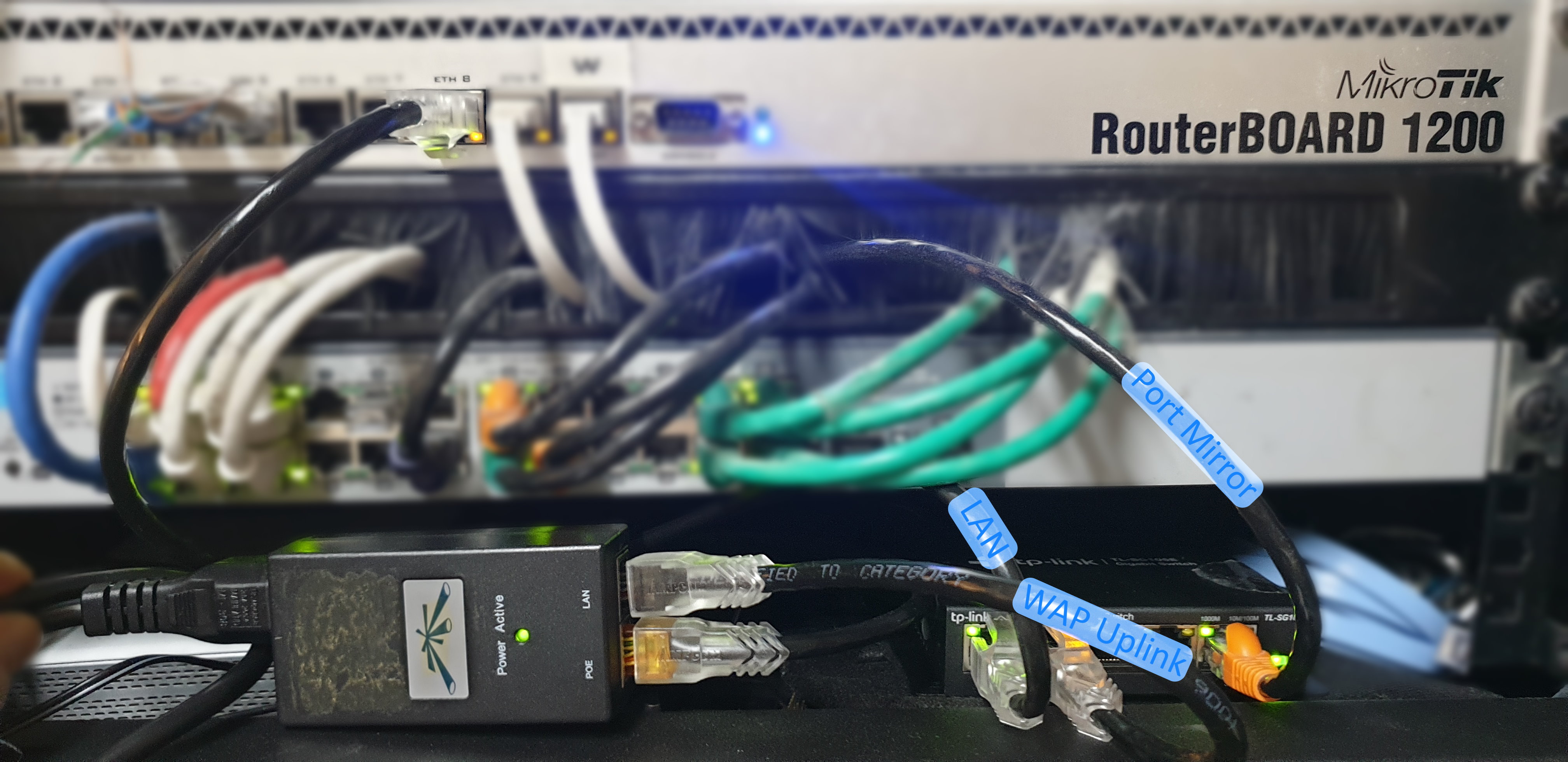
[Initial] Packet Capture

- No LAN-LAN packets???
- - misconfigured packet capture setup
Teardown
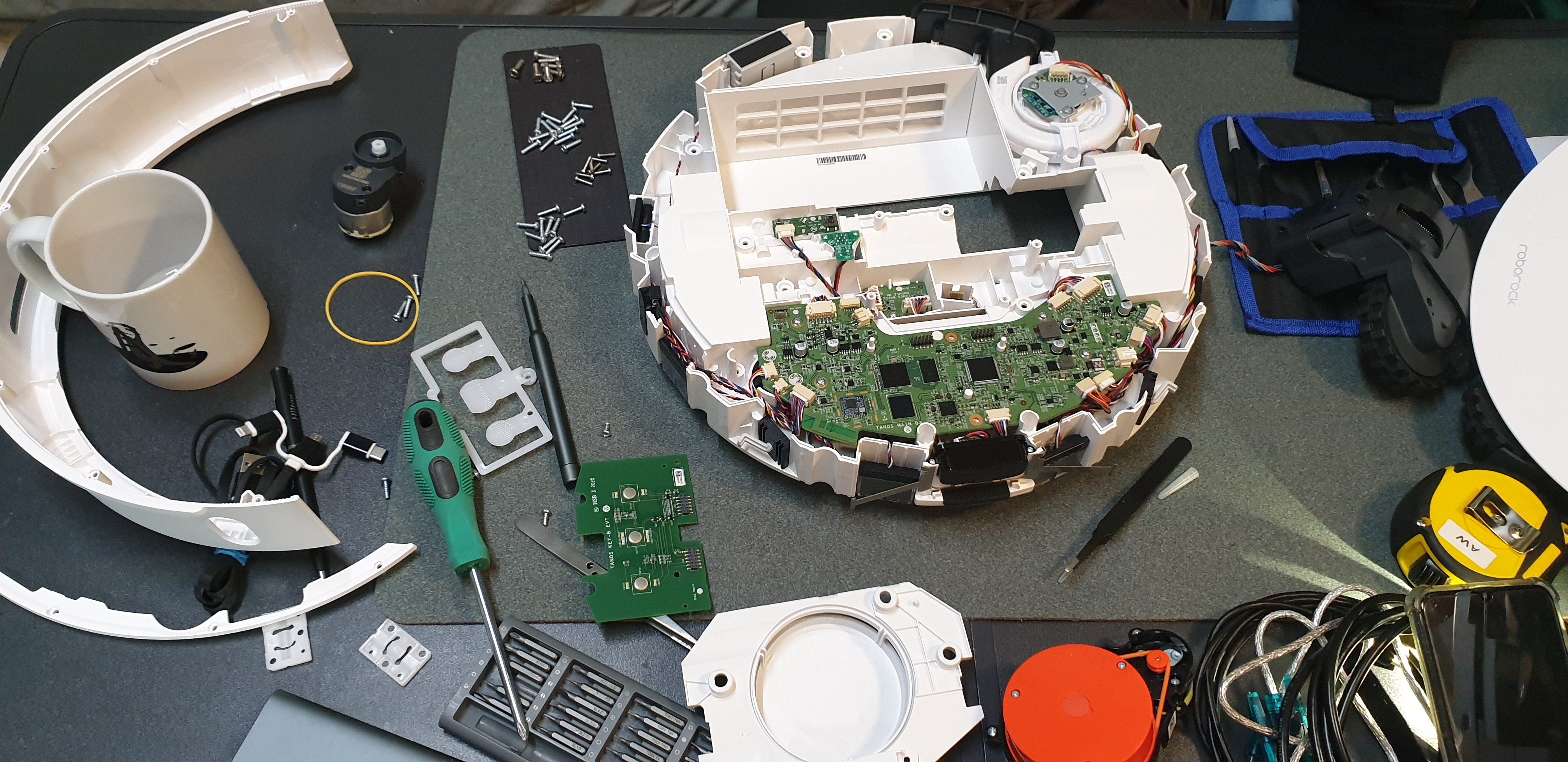
Initial Breakdown and Pinout (where needed)

Identification of the UART pins
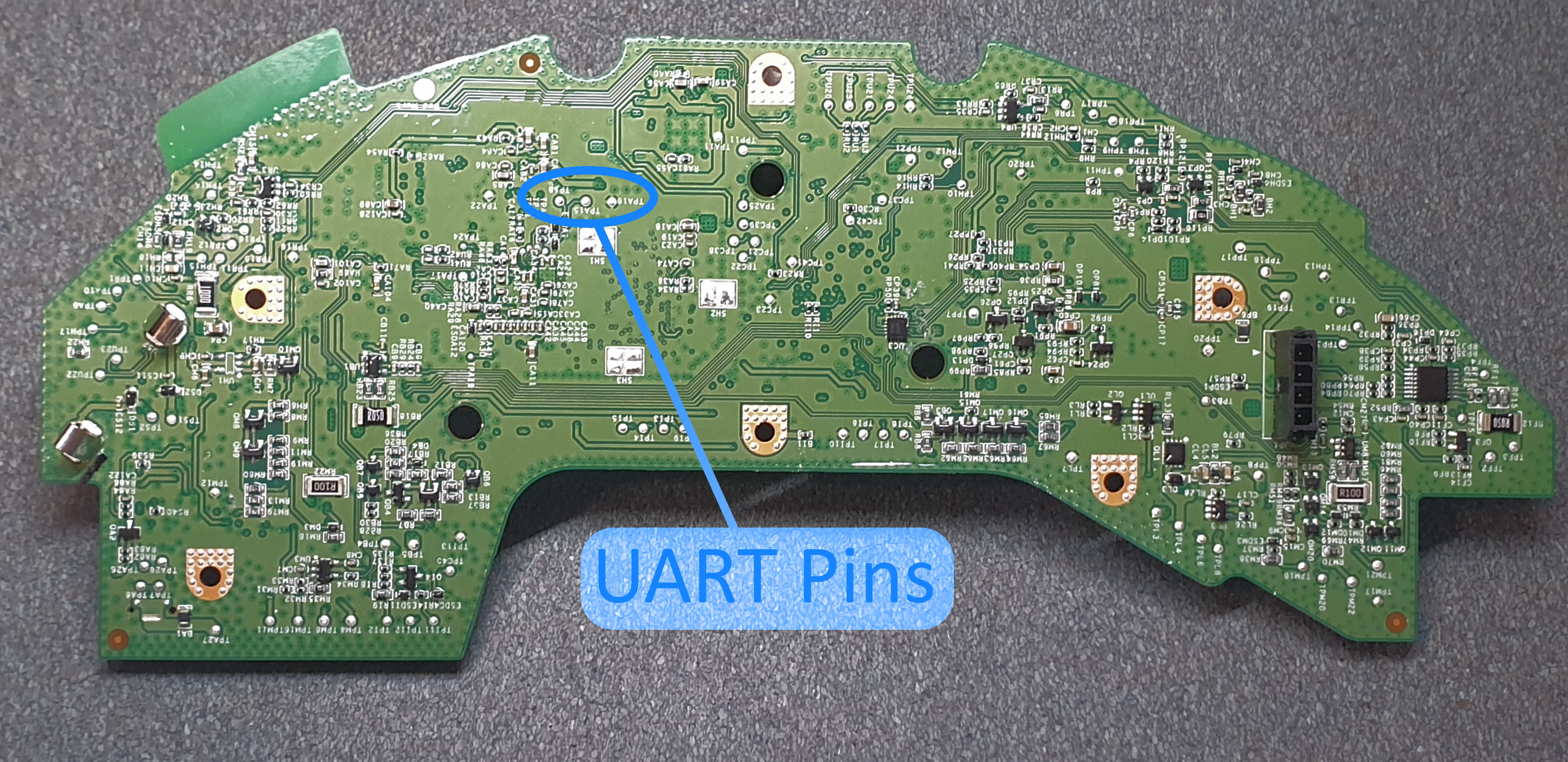
Serial Access
- Serial (baud=115200) gives us a shell!
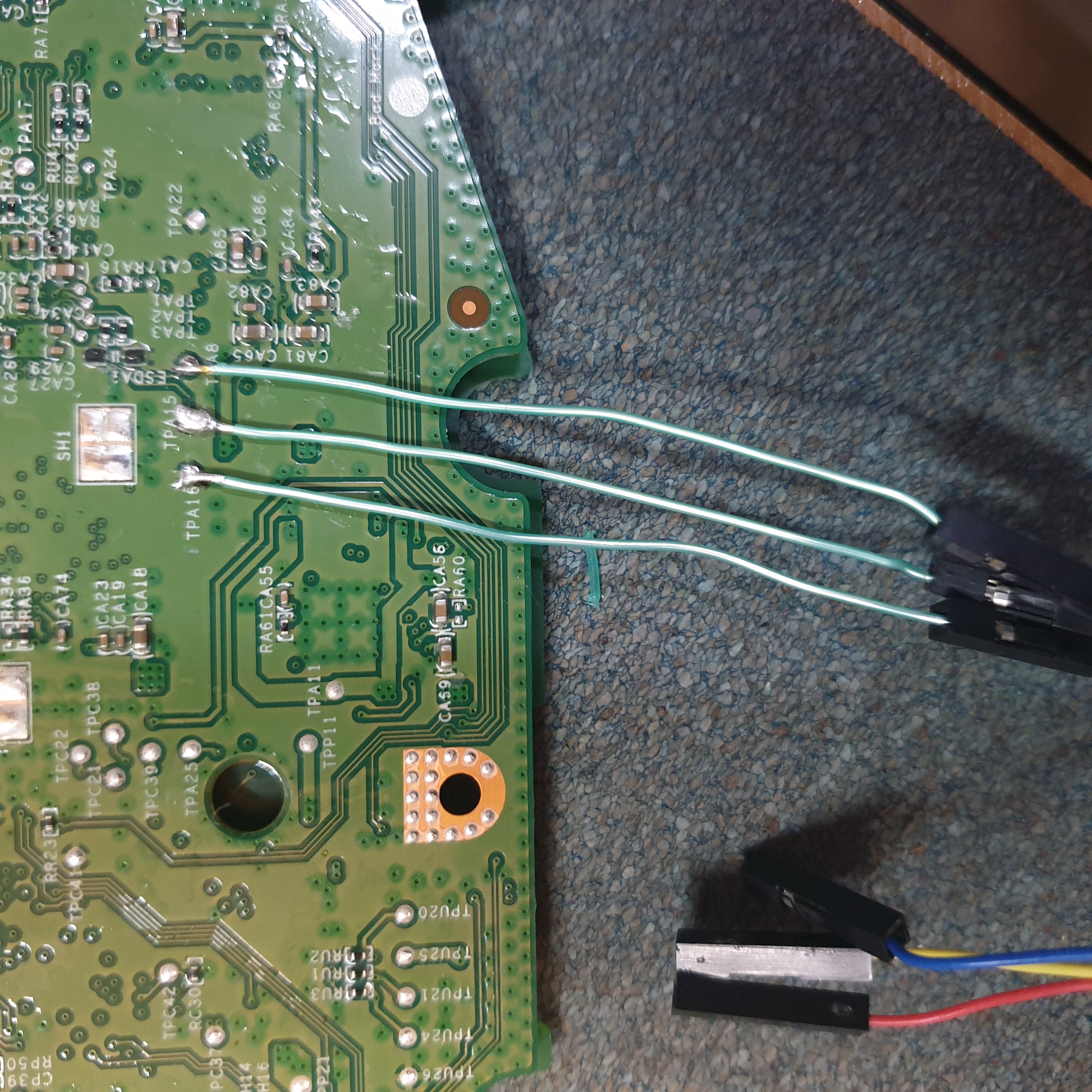

Need a root password though…
U-Boot Bootloader

- Able to enter the bootloader shell if
sis pressed during init

Root!

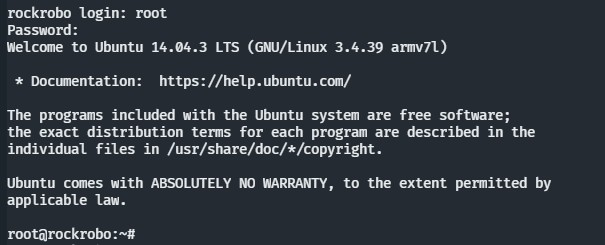
Next Steps
- Dump the firmware and begin RE / forensics
- Redo (and further investigate) live system analysis
- i.e. Properly capture all network traffic
Any Questions?
Andrew Wong
w: featherbear.cc/UNSW-CSE-Thesis
e:

